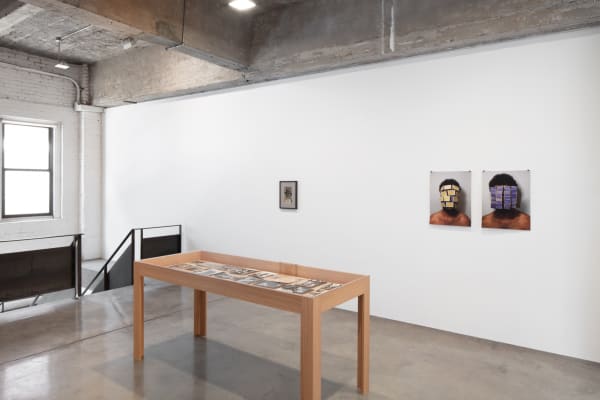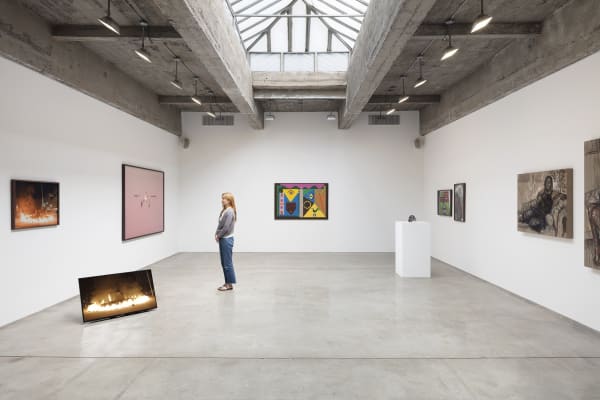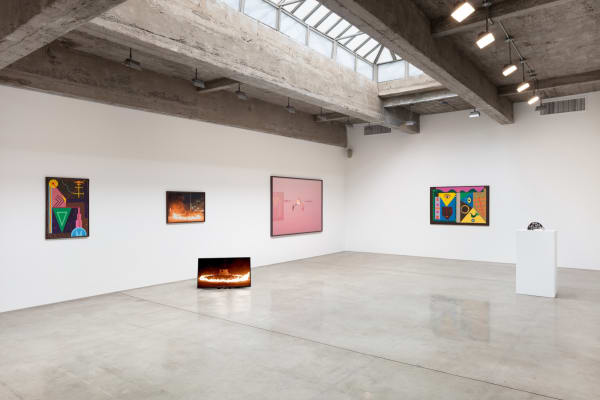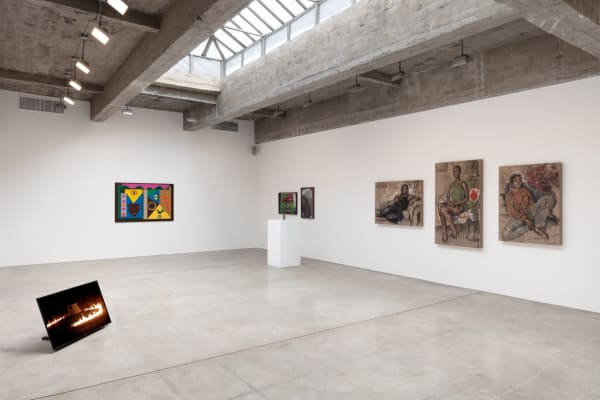Engraved into the Body: Tanya Bonakdar Gallery, New York
Tanya Bonakdar Gallery and Fortes D'Aloia & Gabriel are pleased to present Engraved into the Body, curated by Keyna Eleison and Victor Gorgulho, at Tanya Bonakdar Gallery, New York. The group show expands on the exhibition of the same name at Carpintaria, Fortes D'Aloia & Gabriel's venue in Rio de Janeiro, Brazil in 2020.
The exhibition presents the work of both emerging and established Brazilian artists in tandem with the photographic archive of the Teatro Experimental do Negro (Black Experimental Theater) (TEN), founded and directed by Abdias Nascimento (1914-2011) – a key figure in the country’s advancement of Black intellectual thought. Engraved into the Body takes part of TEN’s photographic collection as a framework and point of departure to discuss issues related to race, identity, and the body. As experiences of injustice and systemic racism have become increasingly urgent areas of cultural inquiry, this exhibition sheds a much needed light on the parallel histories of race and representation in the United States and Brazil, highlighting what both countries have in common as well as what makes their histories unique.
Abdias Nascimento’s multidisciplinary legacy – which developed within the realms of art, academia and politics – is manifested in two of his paintings from the early 1970s, Composição n. 1 and Frontal de um tempo, both painted during his time in the United States.
Self-exiled from Brazil in 1968 when a military dictatorship was underway in the country, the artist traveled to the United States – with support from the Fairfield Foundation – seeking to create an exchange between North American and Brazilian Black civil rights movements. He became a Professor at the University at Buffalo, New York and dedicated himself to painting. The visual representation of signs and deities associated with Afro-Brazilian religions proved to be a powerful theme in Nascimento’s work, enabling him to communicate with his earthly counterparts, as well as with metaphysical realities and spiritual worlds. He eventually returned to Brazil in 1978.
Abdias Nascimento founded Teatro Experimental do Negro (Black Experimental Theater) (TEN) in Rio de Janeiro, in 1944, with the aim of establishing a place for Black people in theatre. The company pioneered a variety of activities that sought to carve out a space and encourage support for Black culture within a deeply racist society through literacy courses, labor fronts and even beauty contests. Although TEN’s endeavors were forced to come to a halt in 1961 its legacy resonates today more than ever.
Engraved into the Body incorporates works from TEN’s photographic collection to highlight the narrative dimension of the body, which is present in many of the works displayed, particularly in the photo-performances of Antonio Tarsis, Ayrson Heráclito and Carla Santana. Through different approaches, their works develop the idea of using the body as a medium in a performative act.
Meanwhile, Melissa de Oliveira’s photography uses the opposite approach, as it looks to the other. Through portraits taken at Morro do Dendê, a neighborhood of slums in the outskirts of Rio de Janeiro, where the artist was born and currently lives, de Oliveira uses the medium of photography as a practice in alterity and subjectivity.
Throughout the exhibition, video works capture performative gestures. In Rodrigo Cass’s Narciso no mijo (Narcisus in Piss), the artist is on a quest for his own reflection. In Devolta by Diambe, documentation of circular choreography is carried out around a public monument that pays homage to Princesa Isabel, a member of the Brazilian Imperial Family. In 1888, Princesa Isabel issued Lei Áurea, which abolished slavery in the country – 23 years after the United States. Even though Isabel’s act was worthy of public recognition, her historical role has long been called into question and her gesture considered purely emblematic given that it did not actually change the country’s reigning slave-owning model. Davi Pontes & Wallace Ferreira’s film, Delirar o racial, reflects upon race and plays with concepts of quantum physics in a performance that is a hybrid of dance and self-defense.
The re-assessment of colonial imagery is also explored in the work of Herbert de Paz. The artist fills in the negative space inside the silhouette of an indigenous figure taken from História do Brasil magazine, published for decades by Biblioteca Nacional, which perpetuated a historical narrative forged at the heart of colonialism. Meanwhile, Paulo Nazareth’s sculptures challenge traditional colonial and imperial logic.
The body as an incarnated narrative also appears in the paintings of Márcia Falcão, Panmela Castro and Moisés Patrício. Falcão’s works simultaneously use the female body as a symbol of violence and freedom in both public and private spheres. Castro’s paintings portray close friends and family who agreed to sit for a portrait during the Covid-19 pandemic. The figures depicted in Patrício’s paintings embody the ancestry of Candomblé, one of the major religions of the Brazilian African Diaspora.
The connection between the depiction of the body and religion also appears in the work of Efrain Almeida, whose wood and bronze sculptures embrace the popular imagery of Brazil’s Northeastern region, where he was born. The interest in ordinary materials also defines the sculptural practice of Sonia Gomes. The twisted fabrics enclosed in the wire cage allude to the desired freedom expressed in Agrippina R. Manhattan’s LED work – “Before we fall we will become the sun”.
With special thanks to Elisa Larkin Nascimento and IPEAFRO (Instituto de Pesquisas e Estudos Afro-brasileiros).
All installation images above: Photo by Pierre Le Hors
A walkthrough of 'Engraved into the Body' at Tanya Bonakdar Gallery in New York, 2020.







